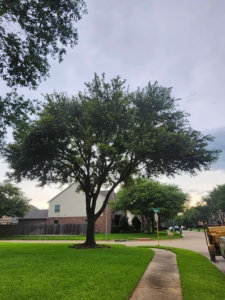Air pollution remains one of the most pressing public health concerns worldwide. However, one of the most effective and natural solutions to this growing issue can be found all around us: trees. In this post, we’ll explore how trees reduce air pollution naturally and why investing in green spaces is vital for healthier communities and a cleaner planet.
Table of Contents
- The Global Impact of Air Pollution
- The Science Behind Trees and Air Purification
- Particulate Matter and How Trees Help
- Selecting Tree Species for Maximum Air Quality Benefits
- Practical Steps for Communities
- Conclusion
1. The Global Impact of Air Pollution
Air pollution stems from industrial activities, vehicle emissions, and various other human-centric sources:
- Health Risks: Prolonged exposure to polluted air contributes to respiratory illnesses, heart disease, and even shortened life expectancy.
- Environmental Damage: Excessive pollutants can cause acid rain, damage crops, and disrupt entire ecosystems.
Planting and conserving trees is a critical strategy for mitigating these negative impacts and helping communities breathe easier.
2. The Science Behind Trees and Air Purification
2.1 Absorption of Gaseous Pollutants
Trees have natural filtration systems. Their leaves and bark absorb harmful gases like carbon dioxide (CO₂), nitrogen oxides (NOₓ), and sulfur dioxide (SO₂). By absorbing these pollutants, trees help lower the concentration of toxic chemicals circulating in the atmosphere.
2.2 Release of Oxygen
Through photosynthesis, trees convert CO₂ into the oxygen that humans and animals need to survive. This not only decreases the amount of carbon in the air but also enriches it with fresh oxygen.
2.3 Transpiration and Cooling Effects
Transpiration is the process by which plants release water vapor through their leaves. This natural cooling mechanism helps moderate local temperatures, which can reduce the formation of ground-level ozone—a pollutant linked to smog.
3. Particulate Matter and How Trees Help
Particulate matter (PM) includes fine dust, soot, and other tiny particles that can penetrate deep into our lungs. Here’s how trees reduce air pollution naturally when it comes to particulate matter:
- Physical Filtration: Leaves and branches trap dust, ash, and dirt, preventing particles from entering the air we breathe.
- Surface Area Advantage: The rough surfaces of leaves and bark increase the tree’s overall filtering capacity, catching more particles over time.
- Urban Forest Canopy: In cities, clusters of mature trees form a canopy that can significantly reduce local concentrations of PM, offering better air quality to residents.
4. Selecting Tree Species for Maximum Air Quality Benefits
Not all trees purify the air with the same efficiency. When choosing a tree to plant or conserve, consider:
- Leaf Surface Area: Broadleaf species often capture more pollutants because they provide a larger surface area.
- Growth Rate and Size: Faster-growing species like poplar or willow can make a quicker impact but might also require more maintenance.
- Local Climate and Soil: Native species generally thrive better, are more resistant to local pests, and require less water.
- Allergen Considerations: Some species produce large amounts of pollen, which could exacerbate allergies.
5. Practical Steps for Communities
5.1 Urban Tree Planting Initiatives
Local governments and community organizations can start campaigns to plant trees along streets, in parks, and around schools. These initiatives often combine volunteer efforts with educational programs about environmental stewardship.
5.2 Maintenance and Care
Once planted, regular care—such as watering, mulching, and pruning—ensures trees stay healthy and effective at purifying the air. Neglected trees can become weak or diseased, reducing their ability to filter pollutants.
5.3 Green Infrastructure Planning
Urban planners can integrate green corridors and buffer zones into city designs. Placing more trees near highways and industrial areas can mitigate vehicle exhaust and factory emissions.
5.4 Community Education
Workshops and school programs help raise awareness about how trees reduce air pollution naturally. Empower residents with knowledge about tree care, planting techniques, and the direct link between trees and air quality.
Conclusion
Trees offer a natural, cost-effective way to combat air pollution and improve community health. From absorbing harmful gases to filtering particulate matter, these silent guardians play a massive role in ensuring cleaner skies and healthier populations. By recognizing how trees improve air quality and reduce pollution, individuals, communities, and policymakers can work together to prioritize green solutions in both urban and rural settings.




